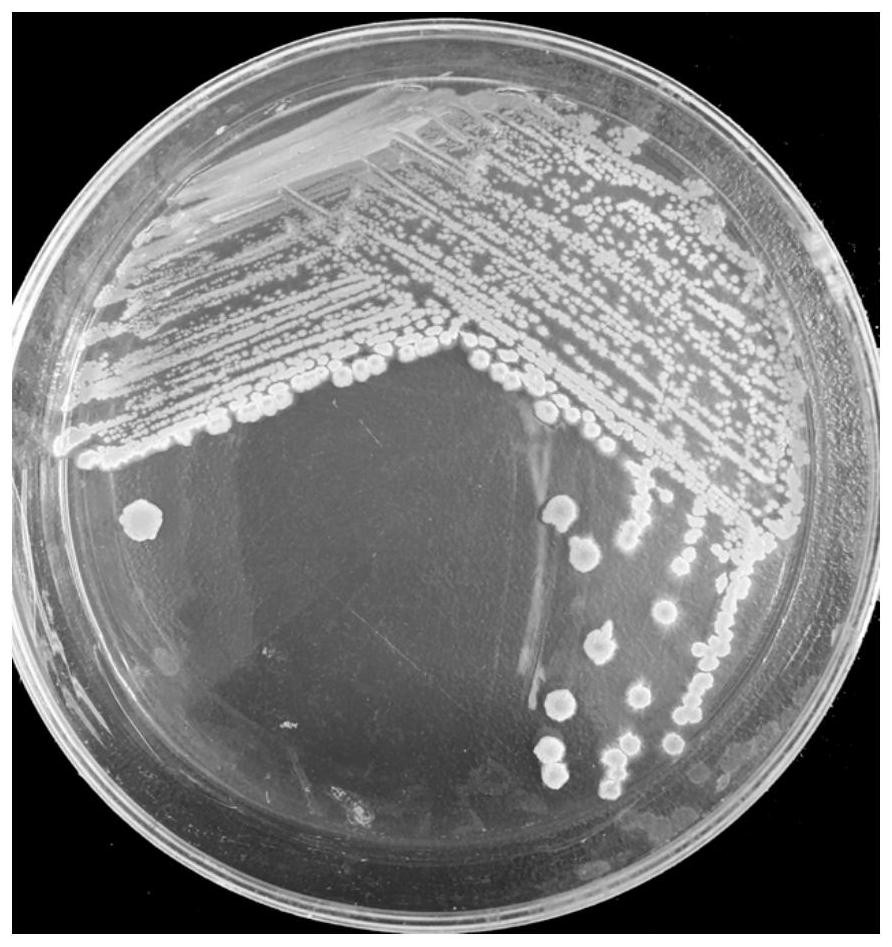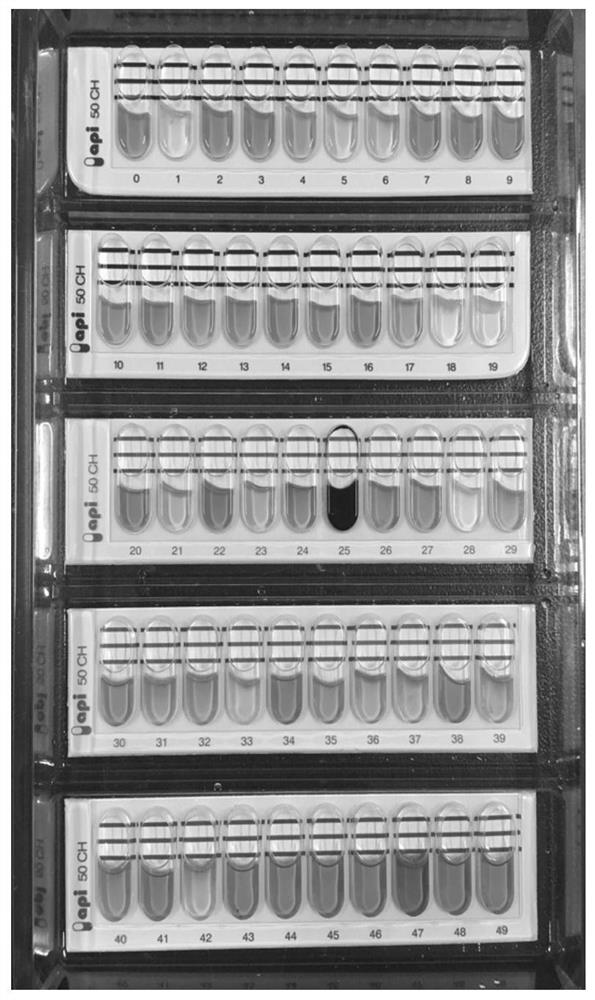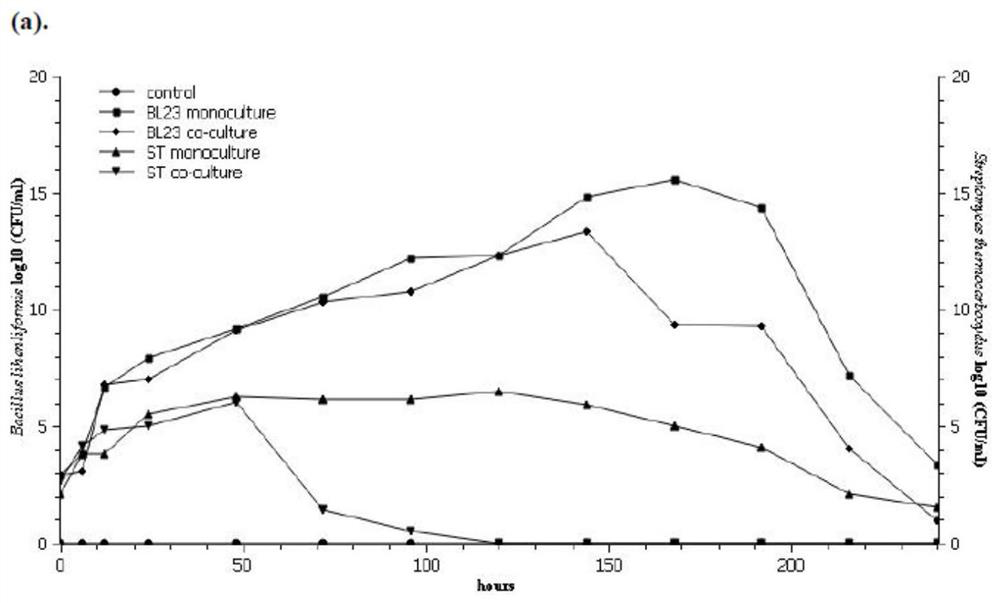A strain of Bacillus licheniformis Umami No. 1 with the ability to inhibit the formation of earthy smell substances in aquatic products and its application
A technology of bacillus licheniformis and antibacterial effect, applied in the direction of application, microbe-based methods, chemicals for biological control, etc., can solve the problems of toxic side effects, loss, and weight loss of aquatic animals, etc., to ensure that the breeding Safety and environmental friendliness, effect of changing bacterial flora structure, growth inhibition
- Summary
- Abstract
- Description
- Claims
- Application Information
AI Technical Summary
Problems solved by technology
Method used
Image
Examples
Embodiment 1
[0030] 1. Isolation and screening of strains
[0031] 1. Strain isolation
[0032] Collect the surface attachments of biological fillers from the recirculating aquaculture system, dissolve the samples with 0.85% sterile saline, serially dilute 6 times by 10 times, and spread them on soybean casein agar medium (TSA), numbering, each sample Do 3 repetitions. Cultivate at 37°C for 24 hours, select colonies with different shapes, fast growth and large diameter, and inoculate them on ordinary broth plates for isolation and purification.
[0033] 2. Strain screening
[0034] The antibacterial performance of the isolated strains was measured by the Oxford plate antibacterial method. After a large number of sorting, four strains were obtained that had inhibitory effects on Streptomyces thermocarboxydus and Streptomyces cyaneofuscatus, which produced odorous substances. Alternative strains, the specific operations are as follows:
[0035] Inoculate Streptomyces carbomonoxide thermo...
Embodiment 2
[0065] Embodiment 2 broth culture experiment
[0066] Experimental settings: normal saline control group (A), single-bacteria culture group of No. The culture group (D) uses TSB medium at 37° C. with a rotational speed of 110 rpm. Sampling at 0, 6, 12, 24, 48, 72, 96, 120, 144, 168, 192, 216 and 240 hours respectively, counting the colonies of Umami strain 1 and Streptomyces thermophilic carbon monoxide by plate method .
[0067] The result is as image 3 As shown, after 24h of culturing, the concentration of Streptomyces thermophilic carbon monoxide in group C increased from 10 2 CFU / mL increased to 10 5 CFU / mL, and the concentration can be maintained for 120h, and then the concentration gradually decreased. In group D, the concentration of Streptomyces carbon monoxide reached 10 after 48 hours of culture. 6 CFU / mL, the concentration began to decrease significantly after that, and dropped to 10CFU / mL at 72h, and then remained in the low concentration range.
Embodiment 3
[0068] Embodiment 3 hemolysis experiment
[0069] Dilute 5 μl to a concentration of 10 8 CFU / mL culture solution of Xianwei bacteria No. 1 strain was inoculated on sheep blood plate medium, and incubated at 37°C for 24 hours to observe whether there was hemolysis. The judgment method is as follows: α-hemolysis, a 1-2 mm grass green hemolysis ring appears in the culture medium around the colony; β-hemolysis, a wide, well-defined, completely transparent hemolysis ring is formed around the colony, with a diameter of about 2-4 mm; if there is no hemolysis ring Appears, there is no hemolysis phenomenon. The result is as Figure 4 As shown, Streptococcus agalactiae as a positive control had a hemolytic ring, and the Umami strain No. 1 did not have a hemolytic ring and no hemolytic phenomenon.
PUM
 Login to View More
Login to View More Abstract
Description
Claims
Application Information
 Login to View More
Login to View More - R&D
- Intellectual Property
- Life Sciences
- Materials
- Tech Scout
- Unparalleled Data Quality
- Higher Quality Content
- 60% Fewer Hallucinations
Browse by: Latest US Patents, China's latest patents, Technical Efficacy Thesaurus, Application Domain, Technology Topic, Popular Technical Reports.
© 2025 PatSnap. All rights reserved.Legal|Privacy policy|Modern Slavery Act Transparency Statement|Sitemap|About US| Contact US: help@patsnap.com



